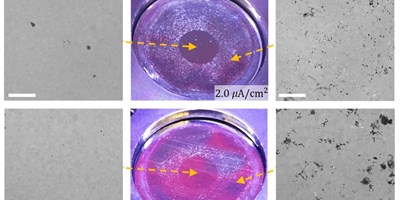Radiation nearly always degrades the materials exposed to it, hastening their deterioration and requiring replacement of key components in high-radiation environments such as nuclear reactors. But for certain alloys that could be used in fission or fusion reactors, the opposite turns out to be true. Researchers at MIT and in California have now found that instead of hastening the materials degradation, radiation actually improves its resistance, potentially doubling the materials useful lifetime.
The finding could be a boon for some new, cutting-edge reactor designs, including molten-salt-cooled fission reactors, and new fusion reactors such as the ARC design being developed by MIT and Commonwealth Fusion Systems.
MIT professor of nuclear science and engineering, Michael Short, says the finding was a bit of serendipity; in fact, the researchers were looking to quantify the opposite effect. Initially they wanted to determine how much radiation would increase the rate of corrosion in certain alloys of nickel and chromium that can be used as cladding for nuclear fuel assemblies.
The experiments were difficult to carry out, because its impossible to measure temperatures directly at the interface between the molten salt, used as a coolant, and the metal alloy surface. Thus it was necessary to figure out the conditions indirectly by surrounding the material with a battery of sensors. Right from the start, though, the tests showed signs of the opposite effect corrosion, the main cause of materials failure in the harsh environment of a reactor vessel, seemed to be reduced rather than accelerated when it was bathed in radiation, in this case a high flux of protons.
The kind of reactor environment the team simulated in their experiments involves the use of molten sodium, lithium, and potassium salt as a coolant for both the nuclear fuel rods in a fission reactor and the vacuum vessel surrounding a superhot, swirling plasma in a future fusion reactor. Where the hot molten salt is in contact with the metal, corrosion can take place rapidly, but with these nickel-chromium alloys they found that the corrosion took twice as long to develop when the material was bathed in radiation from a proton accelerator, producing a radiation environment similar to what would be found in the proposed reactors.
Being able to more accurately predict the usable lifetime of critical reactor components could reduce the need for preemptive, early replacement of parts, Short says.
Courtesy of MIT News.

